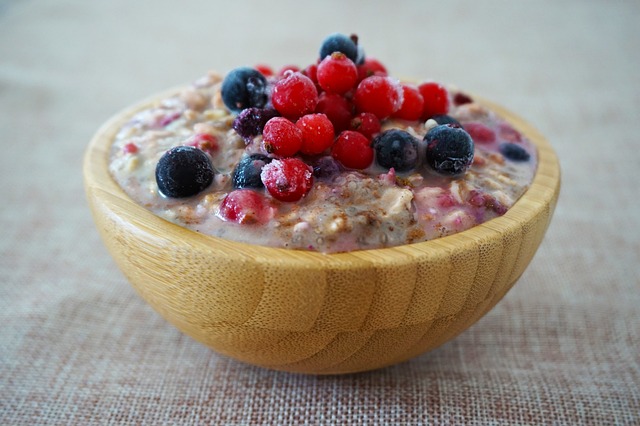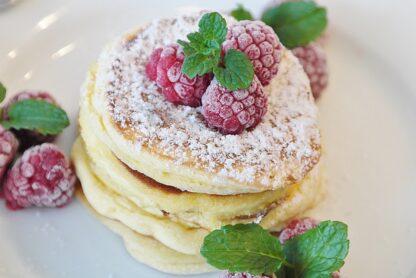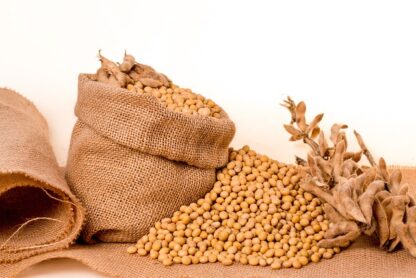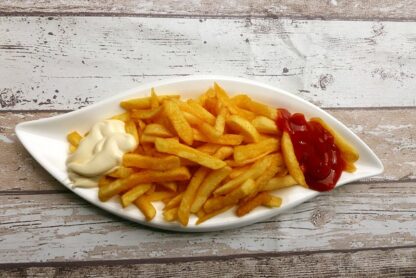Introduction: What is Celiac Disease?
If you have celiac disease, your body can’t tolerate gluten. This protein is found in wheat, rye, and barley. When you eat foods that contain gluten, your immune system reacts by damaging your villi. These are the tiny fingerlike projections that line your small intestine and help you absorb nutrients from food.
The only treatment for celiac disease is to follow a strict gluten-free diet. This can be difficult to do because gluten is found in many common foods, such as bread, pasta, cereal, and baked goods. It’s also used as a thickener or filler in some processed foods, such as soups, sauces, and salad dressings.
Fortunately, there are now many delicious gluten-free breakfast options available. Here are some of our favorites:
Benefits of Eating Gluten-Free
If you have celiac disease, going gluten-free is essential for your health. But avoiding gluten can also have some surprising benefits, even if you don’t have celiac disease. Here are a few benefits of eating gluten-free:
- Gluten-free diets can help with weight loss.
If you’re trying to lose weight, cutting out gluten can help. A lot of processed foods and junk foods contain gluten, so eliminating it from your diet can lead to weight loss.
- Gluten-free diets can improve your digestion.
For people with celiac disease or non-celiac gluten sensitivity, gluten can cause digestive problems like bloating, gas, diarrhea, and constipation. Going gluten-free can help improve your digestion and make you feel more comfortable after meals.
- Gluten-free diets can reduce inflammation.
Inflammation is a common issue for people with celiac disease and non-celiac gluten sensitivity. Eating a gluten-free diet can help reduce inflammation throughout your body and make you feel better overall.
- Gluten-free diets can boost your energy levels.
If you’re feeling sluggish and fatigued, going gluten-free could give your energy levels a boost. Eliminating gluten from your diet can help you feel more alert and energized throughout the day.
Necessary Substitutions to Make Recipes Gluten-Free
When you have celiac disease, your body cannot tolerate gluten, a protein found in wheat, rye, and barley. That means you have to be careful about the ingredients you use in your recipes. Here are some necessary substitutions to make recipes gluten-free:
For flour, use a gluten-free all-purpose flour blend. Be sure to check the labels on all of your other ingredients to make sure they are also gluten-free.
If a recipe calls for bread crumbs, you can substitute crushed gluten-free corn flakes or rice cereal. Or you can make your own bread crumbs by pulsing gluten-free bread in a food processor.
Instead of using regular pasta, look for gluten-free varieties made from rice, quinoa, or lentils. These can usually be found in the natural foods section of your grocery store.
To thicken sauces or gravies, use cornstarch or arrowroot powder instead of flour.
Breakfast Ideas
If you have celiac disease, you know that breakfast can be a challenge. You can’t eat wheat, barley, or rye, which means most traditional breakfast foods are off-limits. But don’t despair! There are plenty of delicious gluten-free breakfast options out there. Here are some of our favorites:
- Overnight oats: Oats are a great source of fiber and protein, and they’re naturally gluten-free. Soak them in milk or yogurt overnight, then top with your favorite fruits and nuts in the morning.
- Egg dishes: Whether you like them scrambled, poached, or sunny-side up, eggs make a great gluten-free breakfast option. Add in some veggies for extra nutrition.
- Pancakes or waffles: Just because you can’t eat wheat doesn’t mean you have to give up pancakes or waffles! There are plenty of recipes out there for gluten-free versions of these beloved breakfast staples.
- Breakfast burrito: Wrap up eggs, potatoes, cheese, and your favorite fillings in a gluten-free tortilla for a hearty and satisfying meal on the go.
- Smoothie: Start your day with a nutritious and refreshing smoothie made with fruits, veggies, milk or yogurt, and a little bit of honey or agave nectar for sweetness
- Overnight Oats
Overnight oats are a quick and easy breakfast option for those with celiac disease. Simply combine gluten-free oats, milk, and your favorite toppings in a jar or container the night before, and refrigerate overnight. In the morning, simply grab and go!
There are endless possibilities when it comes to flavors and toppings for overnight oats. For a sweet option, try adding some fresh fruit or a dollop of honey. For a savory twist, stir in some shredded cheese or diced ham. And don’t forget the nuts and seeds for a crunchy topping!
- Protein Pancakes
Protein pancakes are a delicious and nutritious way to start your day. They’re packed with protein, which will help keep you feeling full and satisfied all morning long. Plus, they’re gluten-free, so they’re perfect for people with celiac disease.
To make protein pancakes, you’ll need:
1/2 cup gluten-free oat flour
1/2 cup almond flour
1 tsp baking powder
1/4 tsp salt
1 cup almond milk or other non-dairy milk (I used unsweetened vanilla)
2 tbsp olive oil or other vegetable oil (I used coconut oil)
2 eggs (I used flax eggs)
Optional toppings: fresh fruit, maple syrup, nut butter, etc.
In a large bowl, whisk together the oat flour, almond flour, baking powder and salt. In another bowl or a glass measuring jug, whisk together the milk and oil. Add the wet ingredients to the dry ingredients and mix until well combined. If using flax eggs, add them now and mix until well combined.
Preheat a frying pan or griddle over medium heat. Scoop 1/4 cup batter into the pan for each pancake. Cook for 2-3 minutes per side, until golden brown and cooked through. Serve with your favourite toppings!
- Smoothie Bowls
Assuming you would like a content section for the blog article Deliciously Delicious Gluten-Free Breakfast Recipes For People With Celiac Disease:
When it comes to breakfast, there are few things more refreshing than a big bowl of fruit. But if you’re looking for something a little more substantial, a smoothie bowl is the perfect option. Packed with nutrients and protein, these bowls will keep you full until lunchtime. And best of all, they’re incredibly easy to make. Simply blend your favorite fruits and vegetables with some milk or yogurt, pour into a bowl, and top with whatever you like. We’ve got some great recipes below to get you started.
Strawberry Banana Smoothie Bowl: This classic flavor combination is always a winner. Simply blend strawberries, banana, milk, and yogurt until smooth. Top with granola and fresh bananas for extra texture and flavor.
Mixed Berry Smoothie Bowl: Another delicious option that’s perfect for summertime. Start by blending frozen mixed berries, milk, and yogurt until smooth. Then top with your favorite nuts or seeds for some crunch.
Tropical Smoothie Bowl: If you’re craving something tropical, this one’s for you. Blend pineapple, mango, coconut milk, and yogurt until combined. Top with shredded coconut flakes and fresh pineapple slices for a real treat.
- Egg Dishes
When you have celiac disease, breakfast can be a tough meal. You can’t have pancakes or waffles because of the gluten in the flour. You can’t have oatmeal because it’s usually made with gluten-containing oats. And you can’t have eggs because, well, they usually come with bread. But don’t worry, we’ve got you covered. Here are some delicious egg dishes that are completely gluten-free.
First up is this amazing frittata. It’s packed with veggies and has a light, fluffy texture that will make you forget all about the bread you’re missing out on. Plus, it’s easy to make and can be tailored to whatever ingredients you have on hand.
If you’re in the mood for something a little sweeter, try these baked eggs in ham cups. They’re like mini quiches without the crust, so they’re perfect for people with celiac disease. And they’re bite-sized, so they’re easy to eat on the go.
Finally, if you need something to fuel your morning workout, try this protein-packed egg bake. It’s loaded with healthy fats and protein to give you sustained energy throughout your day.
- Yogurt Parfaits
There’s no need to miss out on a delicious breakfast just because you have celiac disease! These gluten-free yogurt parfaits are the perfect way to start your day.
Layer some gluten-free granola, fresh fruit, and yogurt in a jar or cup, and you’ve got a healthy and satisfying breakfast that will keep you going until lunchtime. If you’re feeling extra hungry, top your parfait with some nuts or seeds for an added boost of protein.
Conclusion
Eating gluten-free doesn’t have to be boring. There are plenty of delicious breakfast recipes that you can create with a few ingredients for those who suffer from celiac disease. Whether it’s pancakes, omelets, or smoothies, there is something for everyone to enjoy. With these delicious recipes at your fingertips, you can start each day off right and avoid any discomfort due to gluten consumption. Eating well is the key to feeling energized and healthy — so make sure you try out some of these amazing gluten-free breakfast recipes today!









